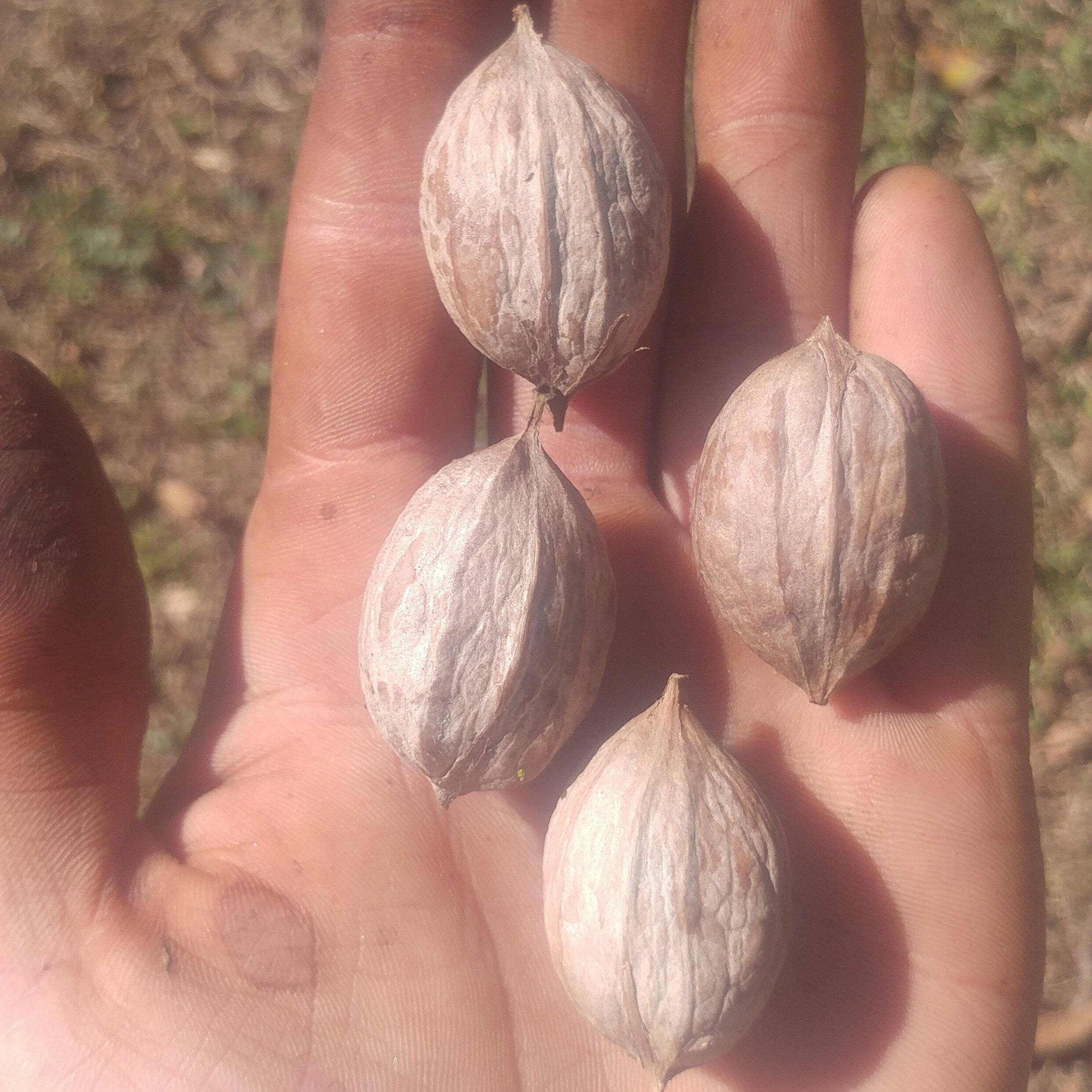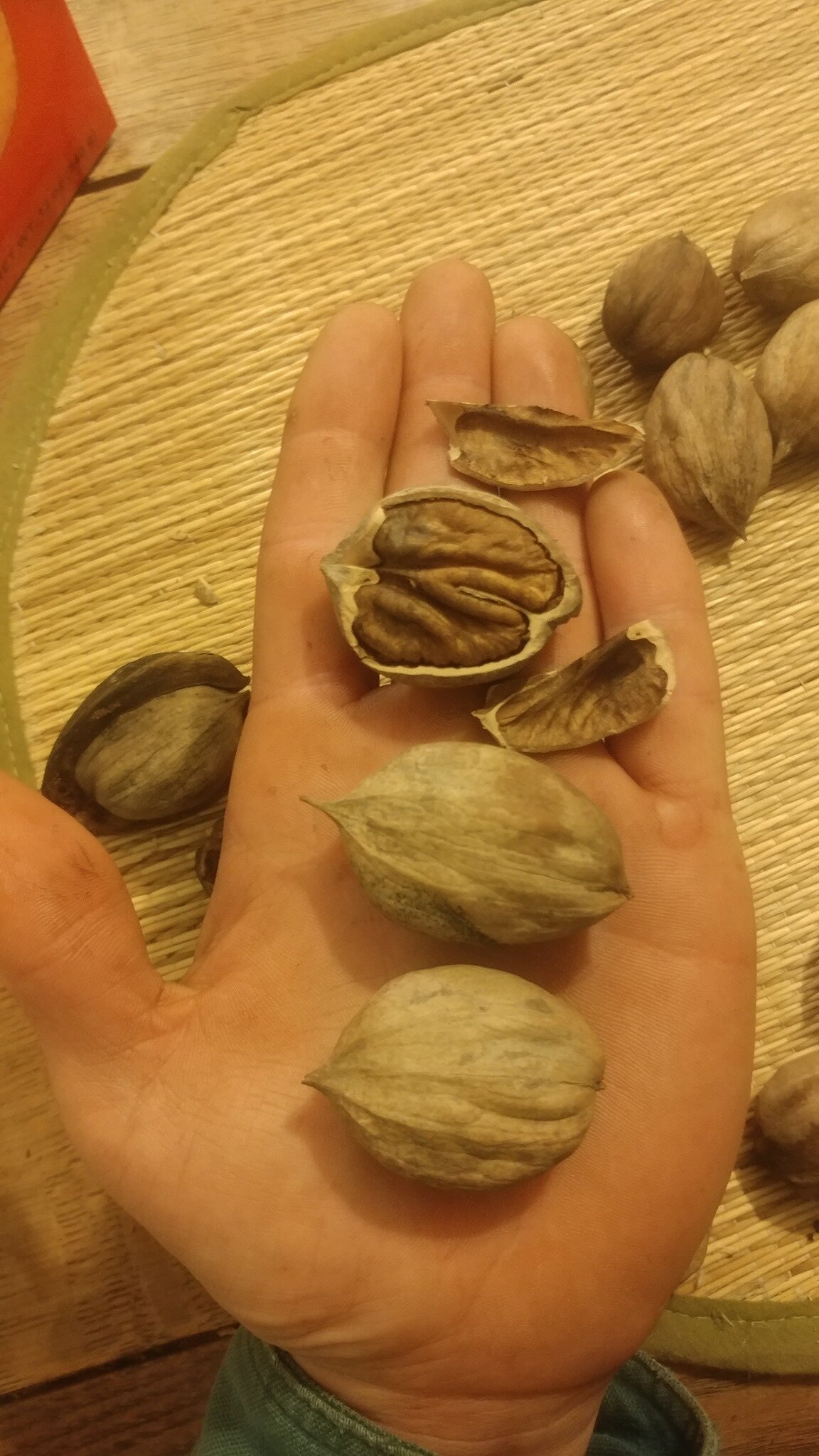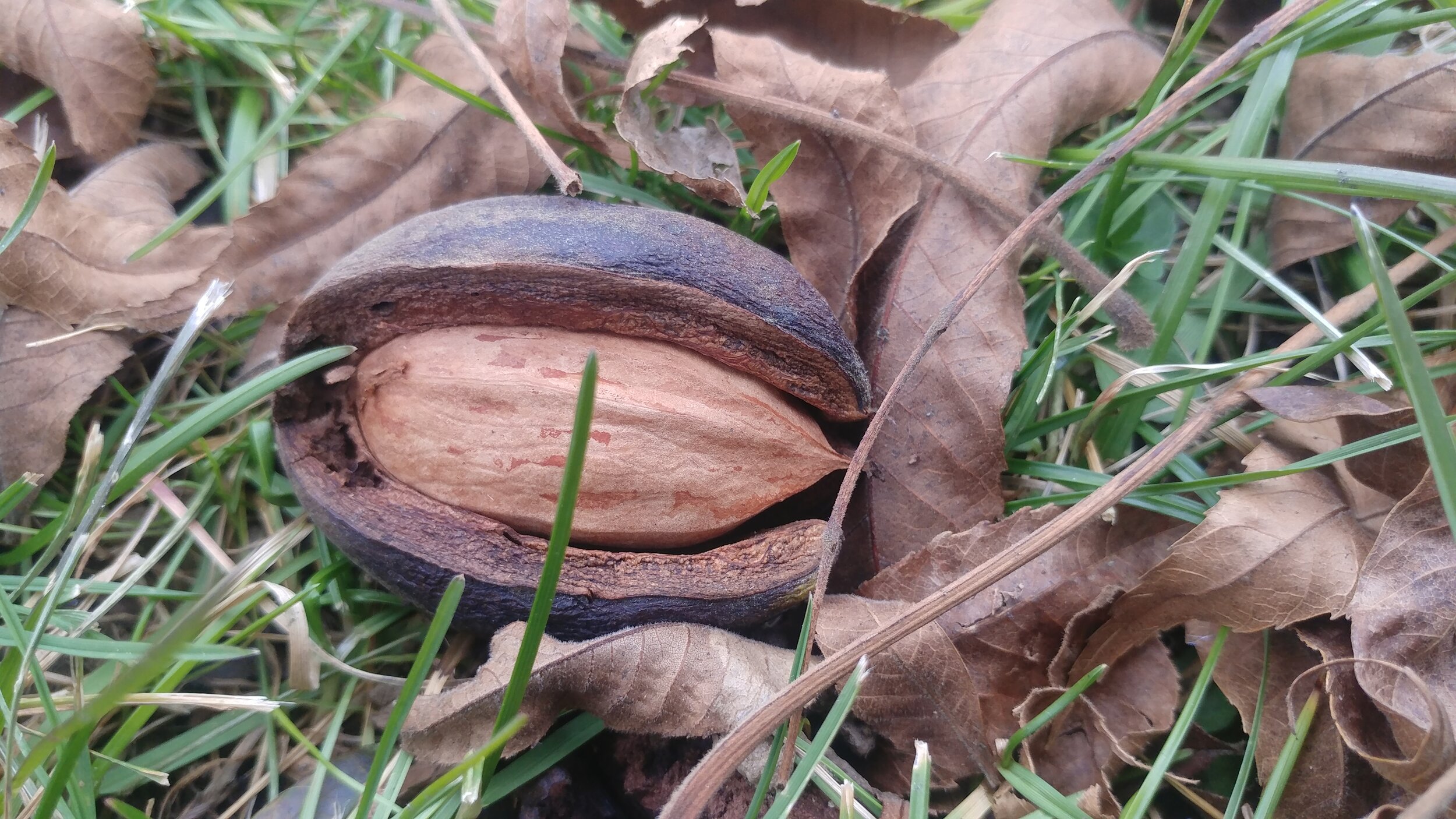 Image 1 of 4
Image 1 of 4

 Image 2 of 4
Image 2 of 4

 Image 3 of 4
Image 3 of 4

 Image 4 of 4
Image 4 of 4





Hicans and other Hickory Hybrids
Hickory hybrid seedlings and hicans (“hickory” + “pecan” crosses). These open-pollinated, second generation hybrids display a range of features from across their diverse parentage. Some offspring will favor one parent or the other, and others will maintain intermediate traits. Some have potential to become excellent trees in their own right.
1- and 2-yr-old bareroot seedlings are offered. These range generally in size from 8-16” tall, with taproots up to 16” long. “First they creep, then they leap” — this saying is true for hickories!
Among the hybrid parentages on offer are:
Beaver seedlings — this is a natural bitternut x shagbark hybrid from Perry county, Pennsylvania, introduced by J. F. Jones in the early 1900s. Makes a larger bitternut-looking nut with 57% kernel, but with a hickory flavor without bitterness. The Beaver variety is very productive.
Bixby seedlings — natural shellbark x pecan hybrid from Illinois. Nut closely resembles McAllister, a little smaller, but fills better.
Burton seedlings — a natural shagbark x pecan hybrid from Owensboro, Kentucky, introduced in the late 1800s. Nuts are richly flavorful and the tree is highly productive.
Clarkville seedlings – a natural shellbark x pecan hybrid from Missouri.
Dooley Burton seedlings – Ken Dooley of Indiana first grew out this select seedling of Burton hican (mentioned above). This is a backcross back to shagbark, so roughly 75% shagbark, 25% pecan. These nuts are quite balanced and symmetrical in their features, and appear rather like a small shellbark. Crack well and the tree is immensely productive. The flavor is rich, combining the best of both the pecan and the shagbark.
Fairbanks seedlings — a natural bitternut x shagbark hybrid from Anamosa, Iowa. Introduced in the early 1900s by Carl Weschcke. This is an excellent nut with 51% kernel, smooth hull, and decent hickory flavor. A highly productive tree.
McAllister seedlings – a natural shellbark x pecan hybrid from Indiana, introduced in the late 1800s. This nut is famous for being “the largest nut in North America” — a believable claim, although somewhat exaggerated like a fish tale, as there are specimens of shellbark hickory in North America which rival or exceed McAllister in size. Nevertheless, it is probably the largest hybrid nut in existence thus far, and is rather like an enormous pecan. Flavor is fantastic.
Pleas seedlings — a natural pecan x bitternut hybrid from Oklahoma. Tree is a very vigorous grower, productive. Nut makes for good fresh eating.
T-92 seedlings – hican cultivar bred by Bill Thielenhaus of Kansas. One of the better hicans in terms of flavor, crackability, and productivity.
Hickory hybrid seedlings and hicans (“hickory” + “pecan” crosses). These open-pollinated, second generation hybrids display a range of features from across their diverse parentage. Some offspring will favor one parent or the other, and others will maintain intermediate traits. Some have potential to become excellent trees in their own right.
1- and 2-yr-old bareroot seedlings are offered. These range generally in size from 8-16” tall, with taproots up to 16” long. “First they creep, then they leap” — this saying is true for hickories!
Among the hybrid parentages on offer are:
Beaver seedlings — this is a natural bitternut x shagbark hybrid from Perry county, Pennsylvania, introduced by J. F. Jones in the early 1900s. Makes a larger bitternut-looking nut with 57% kernel, but with a hickory flavor without bitterness. The Beaver variety is very productive.
Bixby seedlings — natural shellbark x pecan hybrid from Illinois. Nut closely resembles McAllister, a little smaller, but fills better.
Burton seedlings — a natural shagbark x pecan hybrid from Owensboro, Kentucky, introduced in the late 1800s. Nuts are richly flavorful and the tree is highly productive.
Clarkville seedlings – a natural shellbark x pecan hybrid from Missouri.
Dooley Burton seedlings – Ken Dooley of Indiana first grew out this select seedling of Burton hican (mentioned above). This is a backcross back to shagbark, so roughly 75% shagbark, 25% pecan. These nuts are quite balanced and symmetrical in their features, and appear rather like a small shellbark. Crack well and the tree is immensely productive. The flavor is rich, combining the best of both the pecan and the shagbark.
Fairbanks seedlings — a natural bitternut x shagbark hybrid from Anamosa, Iowa. Introduced in the early 1900s by Carl Weschcke. This is an excellent nut with 51% kernel, smooth hull, and decent hickory flavor. A highly productive tree.
McAllister seedlings – a natural shellbark x pecan hybrid from Indiana, introduced in the late 1800s. This nut is famous for being “the largest nut in North America” — a believable claim, although somewhat exaggerated like a fish tale, as there are specimens of shellbark hickory in North America which rival or exceed McAllister in size. Nevertheless, it is probably the largest hybrid nut in existence thus far, and is rather like an enormous pecan. Flavor is fantastic.
Pleas seedlings — a natural pecan x bitternut hybrid from Oklahoma. Tree is a very vigorous grower, productive. Nut makes for good fresh eating.
T-92 seedlings – hican cultivar bred by Bill Thielenhaus of Kansas. One of the better hicans in terms of flavor, crackability, and productivity.